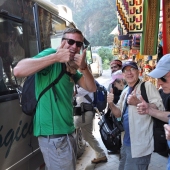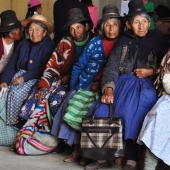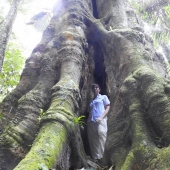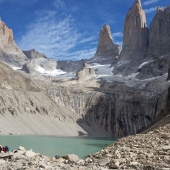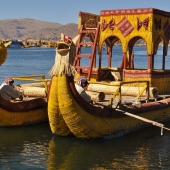
The Future of Machu Picchu Tours
For various reasons, there have always been rumors about Machu Picchu "closing shop." The grapevine of unreliable comments ebbs and flows depending on . . . who knows what? It might be confusion about the routine closing of the Inca Trail every February. But once a story lands on the internet, like a raging fire, it can easily blow out of control. People need to understand that unless the Peruvians want to crush the economy and all their hotels, tour operators, airlines, airports, guides, drivers and porters, Machu Picchu is not permanently closing! Even after covid-19 shut down the entire global travel industry, Machu Picchu is slowly reopening. (Follow this link to see more about Machu Picchu reopening after the pandemic)
The country depends on revenue from the steady flow of visitors like a tick needs a dog. It must suck the blood out of its plump, furry host in order to survive. (but ideally not enough to kill it!) Even the coronavirus will not permanently affect the ancient ruins. The ancient city of Machu Picchu was closed during the time that the Peru border was closed. But the government depends on the revenue from visitors and Machu Picchu is reopening in 2020.
Machu Picchu After Covid-19
- Post Covid-19 Travel to Machu Picchu
- Risk Free Cancellation
- Tips for Traveling Safely
- After Closing for Covid, Machu Picchu Reopens with New Rules
What's the future for Machu Picchu? (Keep in mind this was written before the pandemic)
No one can predict with certainty (except maybe Nostradamus who's not talking to me anymore) the exact outcome of even the most well thought-out strategies and plans to preserve and protect "the wonder." One thing is for sure. In spite of the cutbacks to visiting hours, changes to tickets, increases in costs and threat of weather calamities and civil strikes, the number of visitors per year continues to increase. I'm amazed at the effort people undertake to arrange several days of travel to get to Machu Picchu and back home again. And honestly, we're all thankful for all the trips you book.
I constantly chase our guides and visitors for intel, (just ask them!) and I read every news story and article I can find to stay up to date about new rumors and current operations at Machu Picchu, as well as predictions for future changes. Recently I read an illuminating story in the September 2019 issue of "Departures" magazine. (It's not available online or I would post a link). Kevin West wrote about the topic of overtourism and how it will affect prospective visitors going to Machu Picchu, alongside insightful commentary about the impact of the tourism industry on a global scale.
West met with Miguel Antonia Zamora Salas who administers Machu Picchu's 91,000-acre national park. Zamora says he has two goals: 1) to bring more visitors to Machu Picchu, and 2) to protect the delicate ruins from being ruined. Apparently Peru has made tourism "a national policitical priority since the 2000s." In 2018, 1.5 million human beings passed through the stoney gates. Projections for 2021 paint a rosy scene with a bustling 15% increase to 2.25 million visitors, which averages out to about 6160 per day. That's a lot of toilets being flushed! But those projections are likely to be derailed due to shut down of the global travel industry after corona virus closed everything including Machu Picchu for 3 1/2 months. (Follow this link where I posted Tips for traveling to Machu Picchu after corona virus)
How do you accommodate more people traveling to Machu Picchu while simulataneously reducing the impact and "using less?"
Here's what Zamora said, "You allot each visitor a smaller piece of the pie. More people means less resources per person." You do that by moving people through the citadel more quickly. And steer them to other activities including additional unlimited access to a visitors' center and lesser used features like the Inca Trail, waterfalls and smaller ruins.
How will the new Chinchero Airport affect Machu Picchu?
Zamora believes there is one very important uncertainty, rumbling like a volcano underneath these strategies and plans to preserve Machu Picchu. And that's the new Chinchero airport. Currently nearly 100% of visitors get channeled through Cusco where they tap in to the local infrastructure for organizing other activities on their way to Machu Picchu. However if the airport is relocated to Chinchero, and Lima and Cusco are bypassed, a steady stream of visitors will be herded directly to Machu Picchu, skipping Cusco altogether. This would create additional strain on the destination and for this reason Zamora does not support building a new international airport in Chinchero. The results could not only be counter-productive to protecting the ruins, but devastating to the long-term conservation of the very thing they want people to come and see. It's quite a dilemma.
Significant changes to crowd control at Machu Picchu started in 2016:
- restriction to one visit to tour Machu Picchu ruins per general entry ticket
- one way paths
- dedicated exit gate
- no re-entry, not even to use the facilities
- better enforcement of new rules and security cameras to prevent vandalism
- increase in the maximum number of overall visitors from 2500 to 5600 per day (not including Inca Trail hikes and 2 special hikes inside the park)
What are the greatest areas of concern?
- shuttle buses are now the most unpredictable factor affecting the time it takes to get to Machu Picchu. This is the last leg of your journey by air, van and train. Buses operate like the shuttles at the parking lot in Disneyland. They go back and forth between the village of Aguas Calientes and main entry to Machu Picchu picking up and dropping off visitors. There is no schedule. Availability is affected by train arrivals and what appears to be preference for early morning entry to Machu Picchu. The waiting time going up to Machu Picchu in the early am and returning around midday can be over an hour long.
- plumbing. There is only one restroom at the main entry to Machu Picchu. Visitors are not permitted to exit and re-enter the ruins to use the facilities.
- the amount of time people have to explore the citadel (this is the word used to describe the ancient city)
In spite of all the changes, visitor feedback remains overwhelmingly positive. People who have the ability to make the trip rarely regret it! Most of them are stunned and grateful that the citadel has not been turned into a resort. Where else can you go on the planet and get a glimpse of life in the 1500s?
Follow this link to see a 7-Day Machu Picchu Walking Vacation
If you have any questions about anything, Heather and I are available by phone 757-714-6649 and by email: [email protected]


